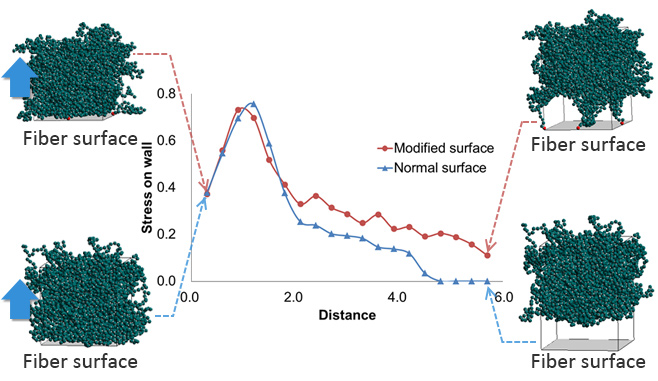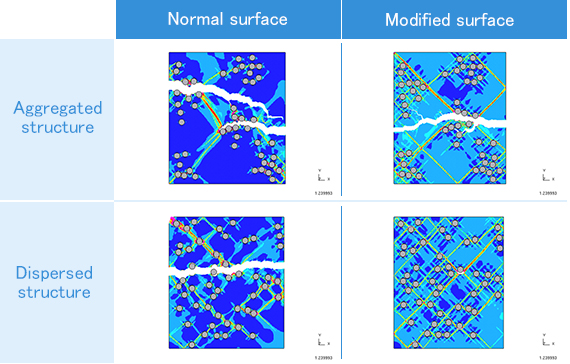Fracture of CFRTP / Interface
In fracture behavior of CFRTP (carbon fiber reinforced thermoplastic), debonding at the interface between carbon fibers and matrix resin can have an impact. In this example, the effect of interface properties and differences in fiber dispersion structure on the phenomenon was evaluated using a multiscale simulation approach. First, Coarse-Grained Molecular Dynamics (CGMD) with COGNAC was used to examine differences in interface properties with and without fiber surface modification. Next, a Finite Element Method model was created using Digimat-FE. Finally, fracture behavior of CFRTP considering interface properties was analyzed using nonlinear Finite Element Method (FEM) in Ansys LS-DYNA. The influence of interface property differences and dispersion structure differences on fracture behavior was evaluated.
Use Cases Highlights
- Evaluation of interfacial properties by Coarse-Grained MD
- Creation of UD material dispersion structure models using Digimat
- Nonlinear finite element analysis in Ansys LS-DYNA considering interfacial properties
Evaluation of interfacial properties by Coarse-Grained MD
Coarse-Grained Molecular Dynamics (CGMD) evaluation of fiber surface modification effect on interfacial properties is shown, assuming chemical bonding prevents complete debonding.

Evaluation of interfacial properties by Coarse-Grained Molecular Dynamics (CGMD)
Creation of UD material dispersion structure model using Digimat
The analysis model for the Finite Element Method was created using Digimat-FE. To reduce computational load, the model was two-dimensional (cross-sectional).

2D model of CFRTP
Nonlinear Finite Element Method analysis considering interfacial properties using Ansys LS-DYNA
Fracture behavior analysis of CFRTP (UD material) considering interfacial properties was performed using Ansys LS-DYNA. Differences in fracture behavior due to interfacial property differences and dispersion structure differences were confirmed in tensile analysis perpendicular to the fiber direction. In unmodified, agglomerated structures, fracture progressed rapidly from the peeled interface.

Finite element analysis using Ansys LS-DYNA
Inquiries Regarding Products
Have questions about product implementation? Contact us today.





